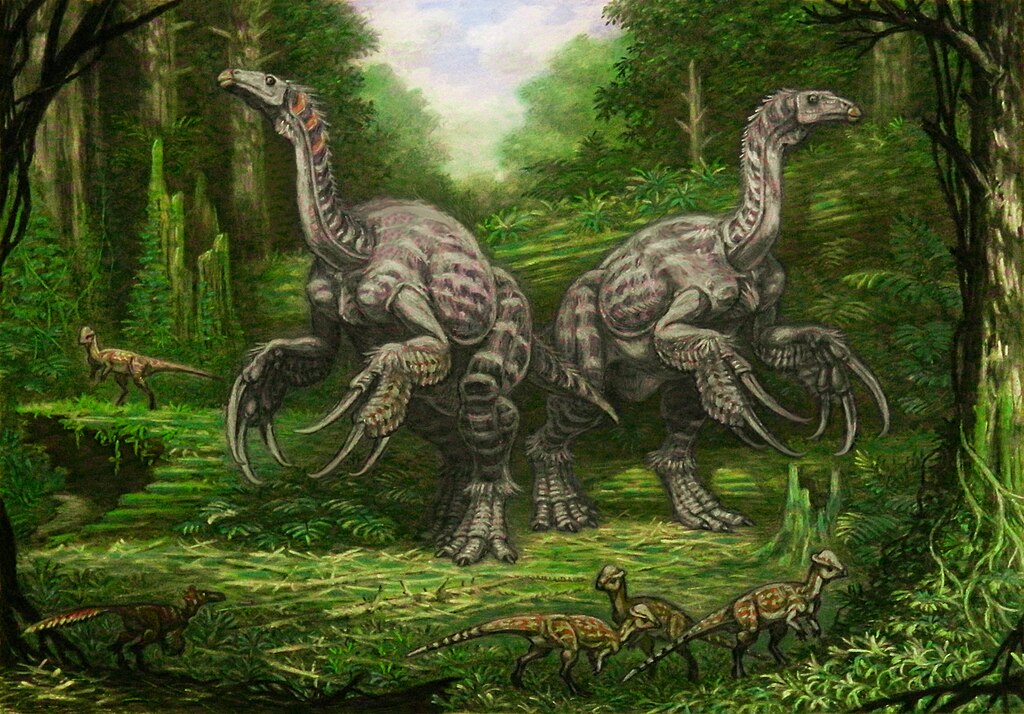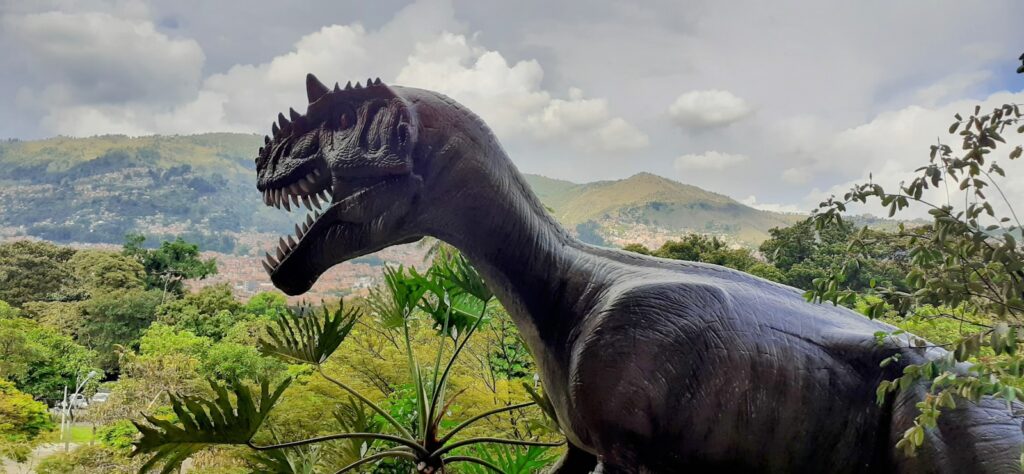Picture this: you’re walking through a museum when suddenly you come face-to-face with claws that stretch longer than baseball bats. These aren’t from some mythical creature or horror movie monster – they belonged to one of the most puzzling dinosaurs ever discovered.
Giant Claws That Defied Logic
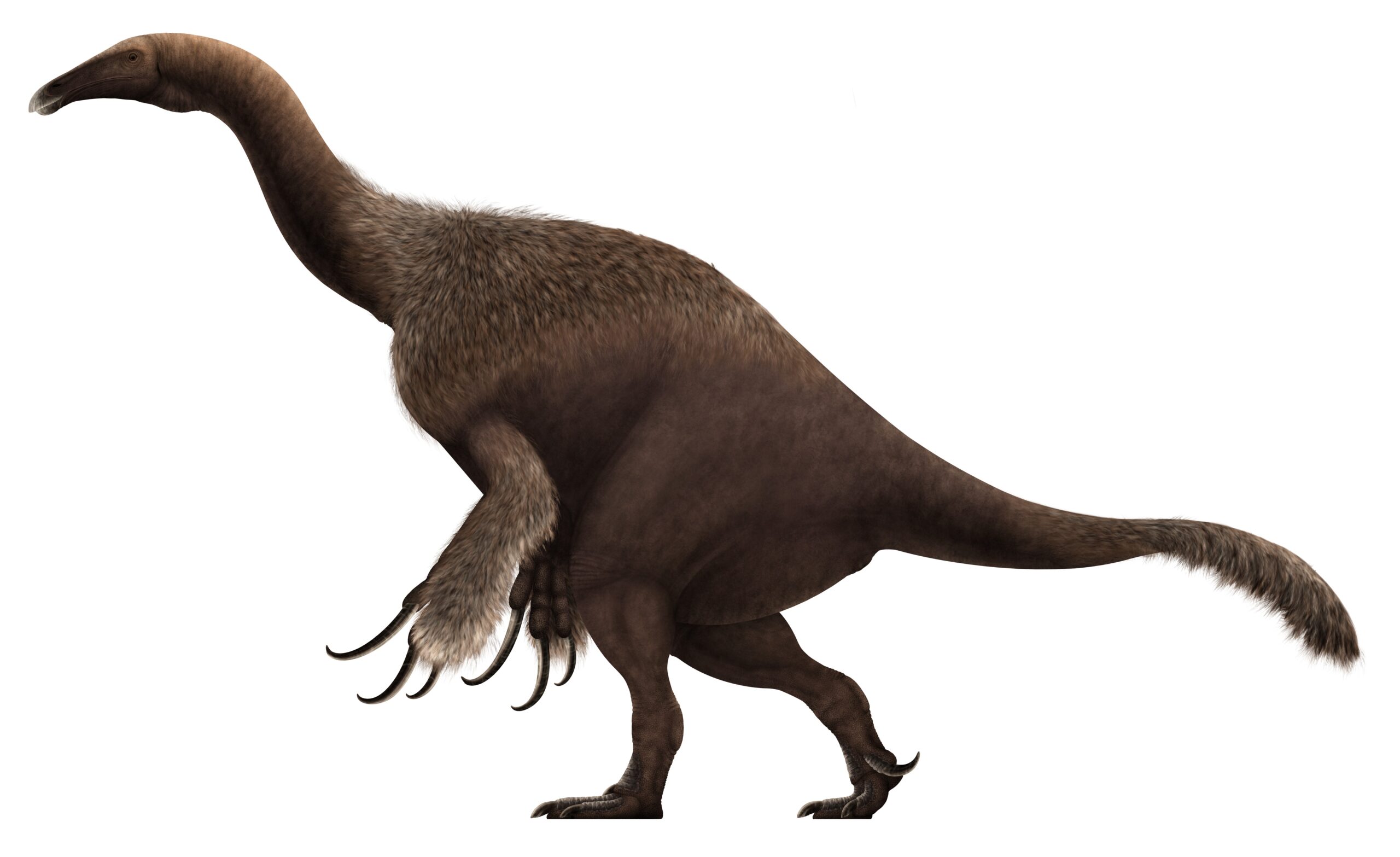
The first Therizinosaurus claws were unearthed in Mongolia’s Gobi Desert in 1948, leaving paleontologists scratching their heads for decades. These massive talons, some reaching over three feet in length, seemed to belong to a creature straight out of nightmares. The discovery was so unusual that scientists initially thought they’d found the remains of a giant turtle.
What made these claws even more mysterious was their razor-sharp appearance combined with their sheer size. Unlike the curved killing tools of predators, these claws were straighter and more blade-like, earning the creature its nickname as the “Freddy Krueger of the Cretaceous.” The comparison wasn’t just about size – it was about the pure terror these weapons could inspire.
The Herbivore That Looked Like a Killer
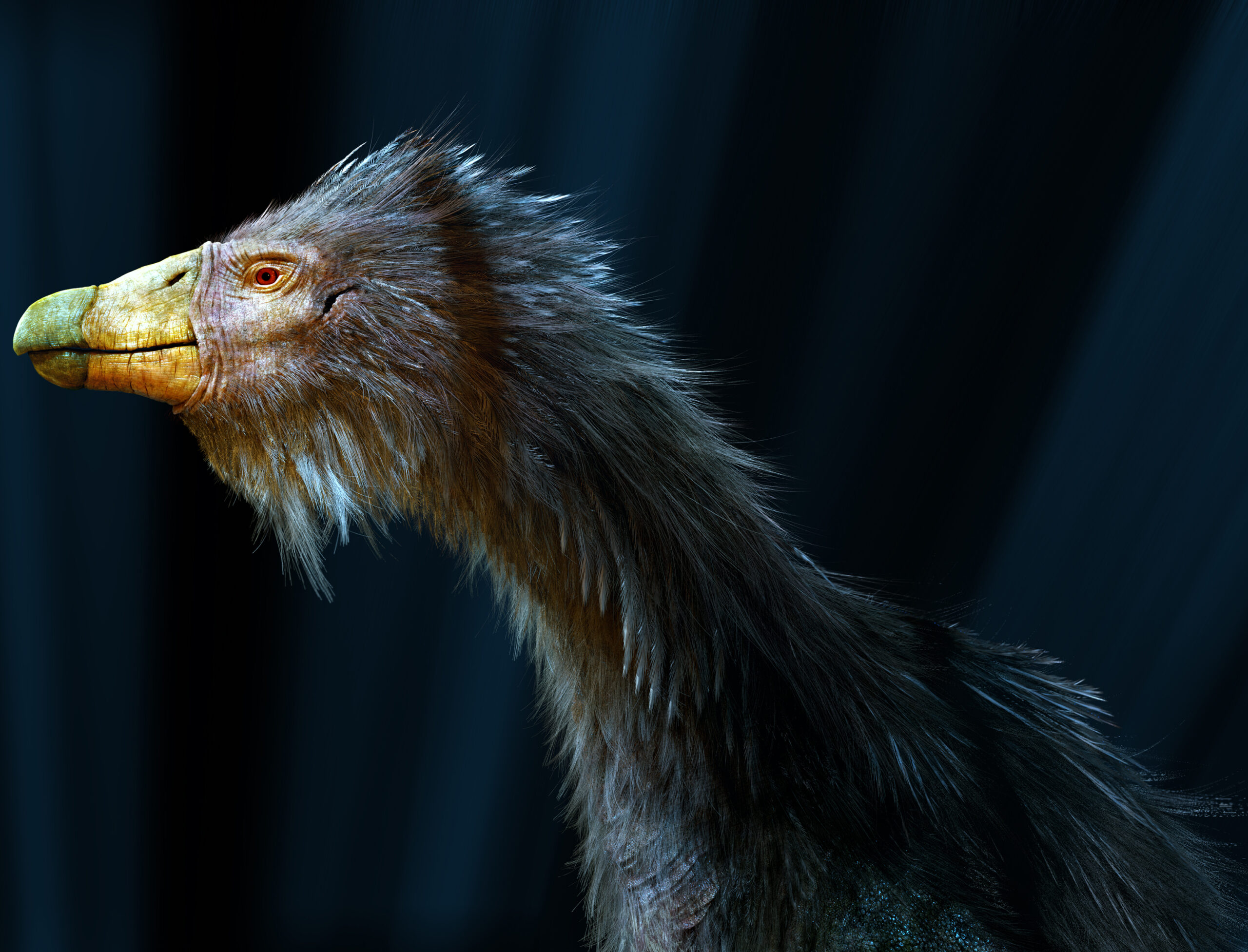
Here’s where the story takes a shocking turn that fooled scientists for years. Those terrifying claws that seemed built for slashing prey belonged to a plant-eater. It’s like discovering that a chainsaw was actually designed for cutting birthday cake.
Therizinosaurus was a massive herbivore that used its impressive claws not for hunting, but for stripping leaves from trees and defending itself from predators. This revelation came only after decades of research and the discovery of more complete fossils from related species. The scientific community had been completely wrong about this creature’s diet and behavior.
The irony is almost comical – nature’s most intimidating-looking claws were essentially oversized salad tongs. This discovery revolutionized how paleontologists approach fossil interpretation, proving that appearances can be devastatingly deceiving even in the prehistoric world.
Size That Defied Imagination
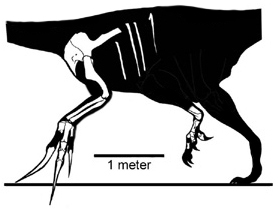
Therizinosaurus wasn’t just unusual – it was colossal. Standing up to 16 feet tall and measuring 35 feet in length, this dinosaur was roughly the size of a modern semi-truck. Its massive frame supported a weight estimated between 3 to 5 tons, making it one of the largest bipedal dinosaurs ever discovered.
The sheer scale of this creature becomes even more impressive when you consider it walked on two legs. Imagine a giraffe-sized animal balancing on its hind legs while wielding claws longer than your arm. The engineering challenges of supporting such massive weight on two legs while maintaining the ability to reach high vegetation were extraordinary.
What’s truly mind-blowing is that despite its enormous size, Therizinosaurus belonged to the same dinosaur group as modern birds. This gentle giant shared ancestry with creatures that would eventually take to the skies, proving that evolution can take the most unexpected paths.
The Gobi Desert’s Greatest Mystery
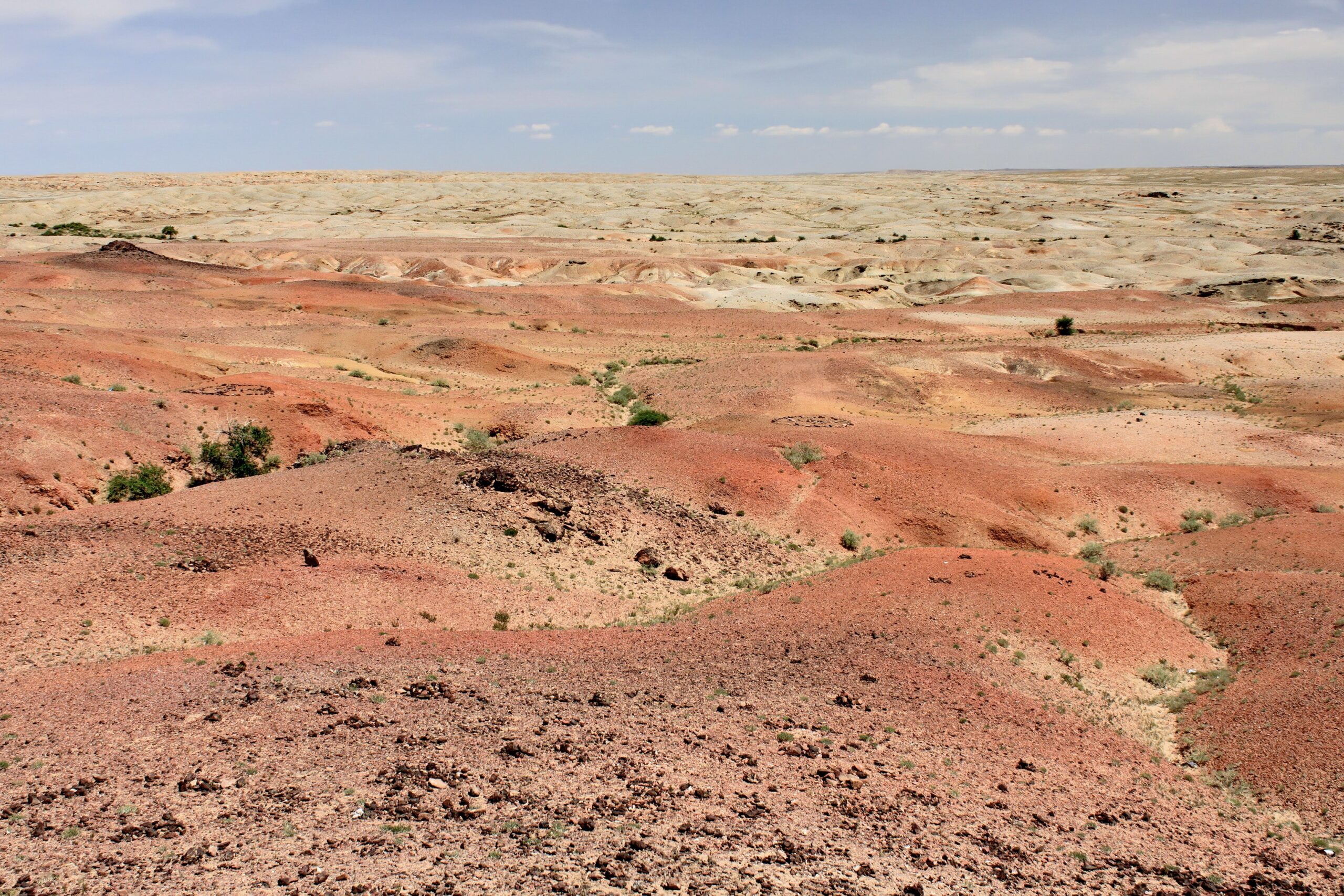
The Gobi Desert has yielded some of paleontology’s most spectacular discoveries, but few have been as puzzling as Therizinosaurus. The extreme conditions that preserved these fossils also made them incredibly difficult to study and understand.
For decades, the only evidence of this creature’s existence came from incomplete fossils – mainly those famous claws and a few arm bones. The desert’s harsh environment had destroyed most of the skeleton, leaving scientists to piece together the creature’s appearance like a prehistoric jigsaw puzzle with most pieces missing.
The fragmentary nature of these remains led to wild speculation about what kind of monster could have possessed such weapons. Some theories suggested it was a massive predator that could slash through armor, while others proposed it was a scavenger that used its claws to tear apart carcasses. The truth would prove far more surprising than any of these dramatic theories.
Evolutionary Oddball Among Dinosaurs
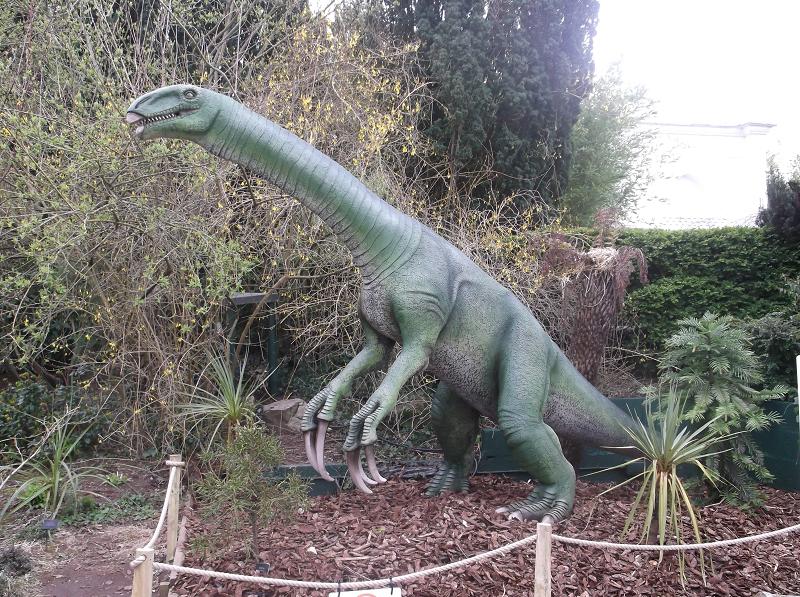
Therizinosaurus represents one of evolution’s most unusual experiments. While most large dinosaurs specialized in either hunting or grazing, this creature developed a unique combination of features that made it unlike anything before or since.
The dinosaur’s evolutionary path led it to develop massive claws, powerful arms, and a long neck – all perfectly adapted for reaching high vegetation that other herbivores couldn’t access. This specialization allowed it to exploit an ecological niche that remained largely untapped by other dinosaurs of its time.
What makes this evolutionary story even more fascinating is that Therizinosaurus developed these features independently from other dinosaur lineages. This convergent evolution shows how nature can arrive at similar solutions through completely different paths, creating creatures that seem to defy logical explanation.
The Claw Structure That Confused Scientists
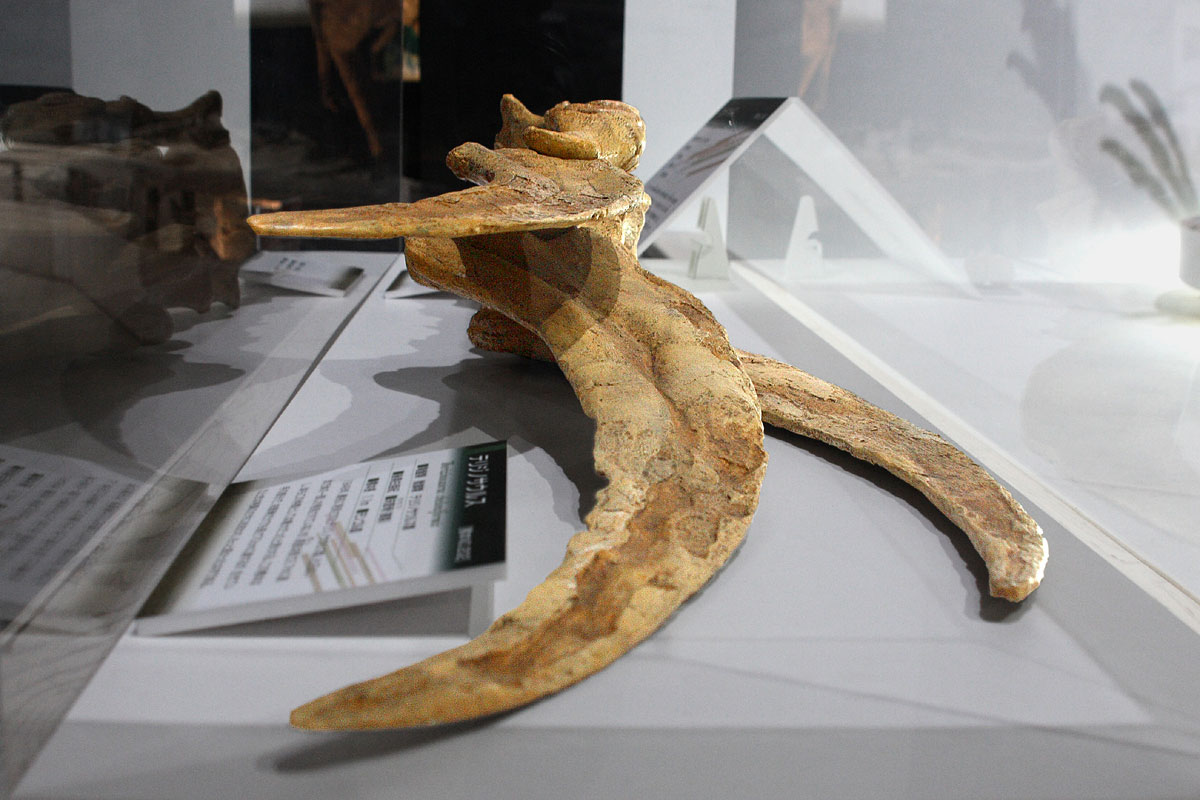
The anatomy of Therizinosaurus claws held secrets that took decades to unravel. Unlike typical predator claws that curve inward for gripping prey, these weapons were straighter and more blade-like, suggesting a completely different function.
Each claw was composed of a bony core covered by a keratin sheath, similar to modern bird talons but scaled up to massive proportions. The structure was incredibly strong yet surprisingly lightweight, allowing the creature to manipulate them with remarkable precision despite their intimidating size.
The wear patterns on fossilized claws revealed that these tools were used for cutting and scraping rather than piercing or slashing. This evidence finally confirmed what many scientists had begun to suspect – these weren’t weapons of war, but tools for harvesting the prehistoric equivalent of a salad bar.
Diet and Feeding Behavior Revealed
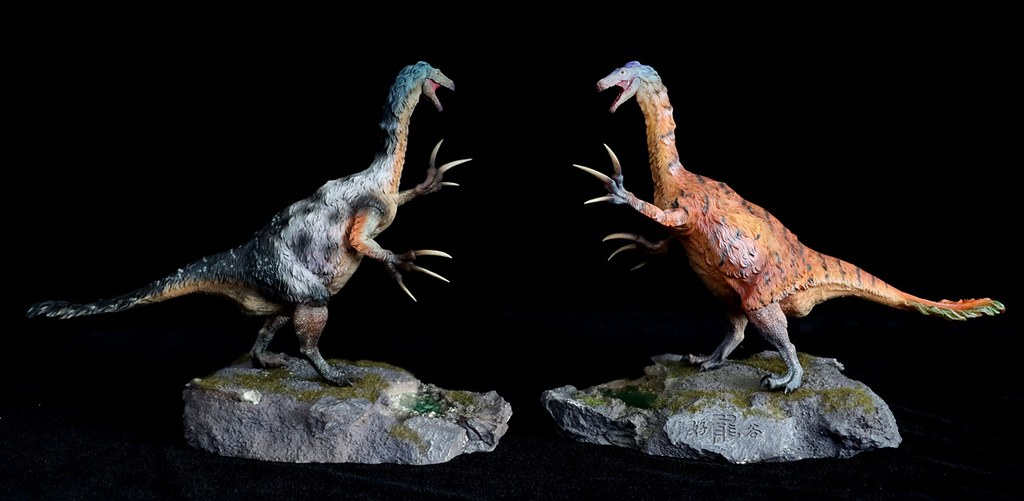
The feeding behavior of Therizinosaurus was as unusual as its appearance. This massive dinosaur used its enormous claws to strip leaves from trees, rake through vegetation, and possibly even dig up roots and tubers.
Unlike other large herbivores that relied on powerful jaws to process tough plant material, Therizinosaurus had a relatively small head and weak teeth. This suggests it was a selective feeder that chose tender shoots and leaves rather than the tough, fibrous vegetation that sustained other plant-eaters.
The creature’s long neck and powerful arms allowed it to reach vegetation up to 15 feet off the ground, accessing food sources that were completely unavailable to ground-dwelling herbivores. This feeding strategy was so successful that it supported one of the largest land animals of its time.
Defensive Capabilities of a Gentle Giant
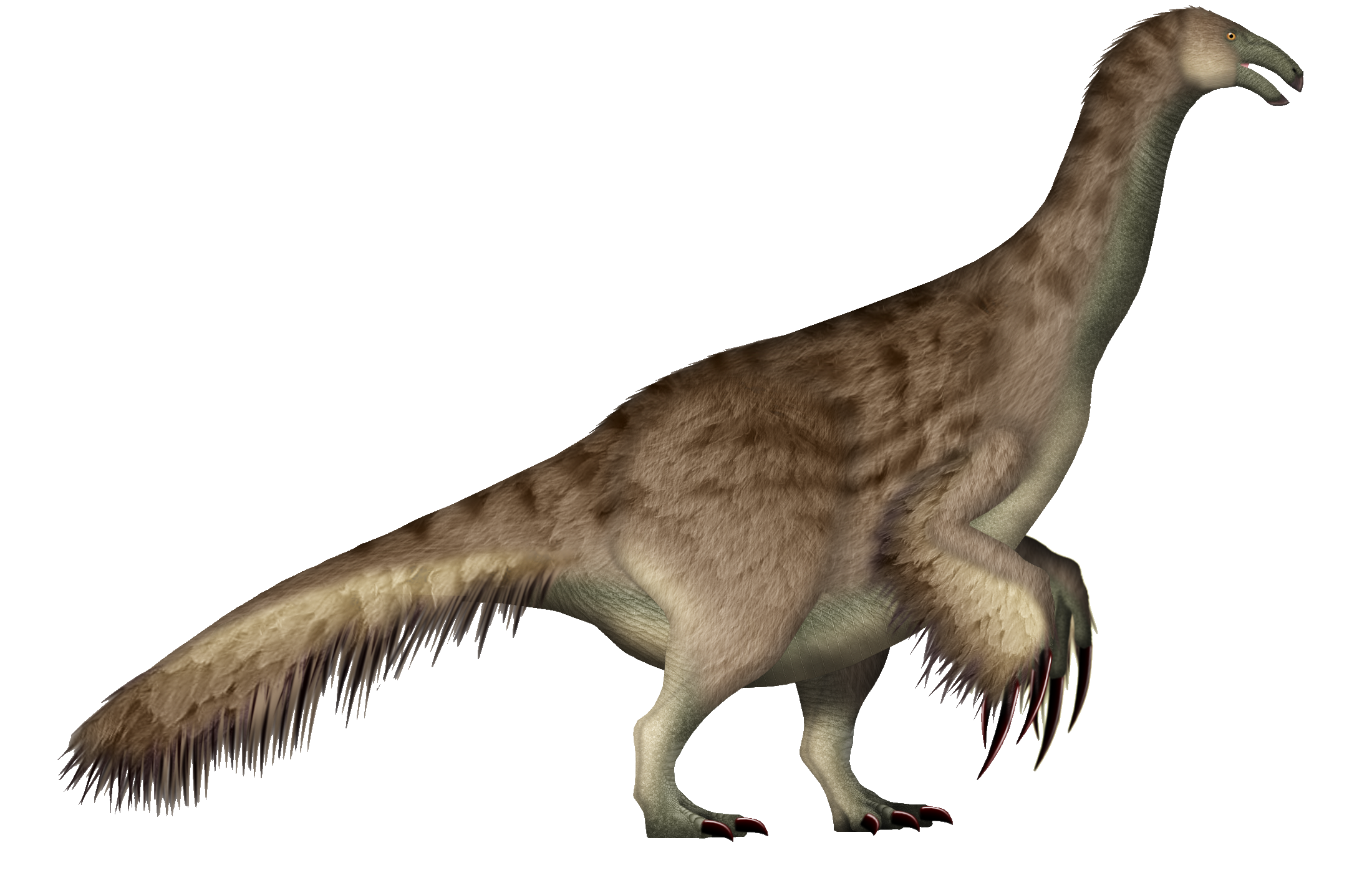
While Therizinosaurus was a peaceful plant-eater, it certainly wasn’t defenseless. Those massive claws that seemed designed for hunting were actually the perfect weapons for deterring even the most determined predators.
A single swipe from one of these claws could have inflicted devastating wounds on any attacker. The sheer reach advantage provided by the creature’s long arms meant that predators would have to get uncomfortably close to launch an attack, giving Therizinosaurus ample opportunity to defend itself.
The psychological impact of these weapons cannot be underestimated. Even modern humans feel intimidated by fossilized claws – imagine the effect they would have had on potential predators who encountered this massive creature in the wild. Sometimes the best defense is simply looking too dangerous to mess with.
Habitat and Environment in the Cretaceous
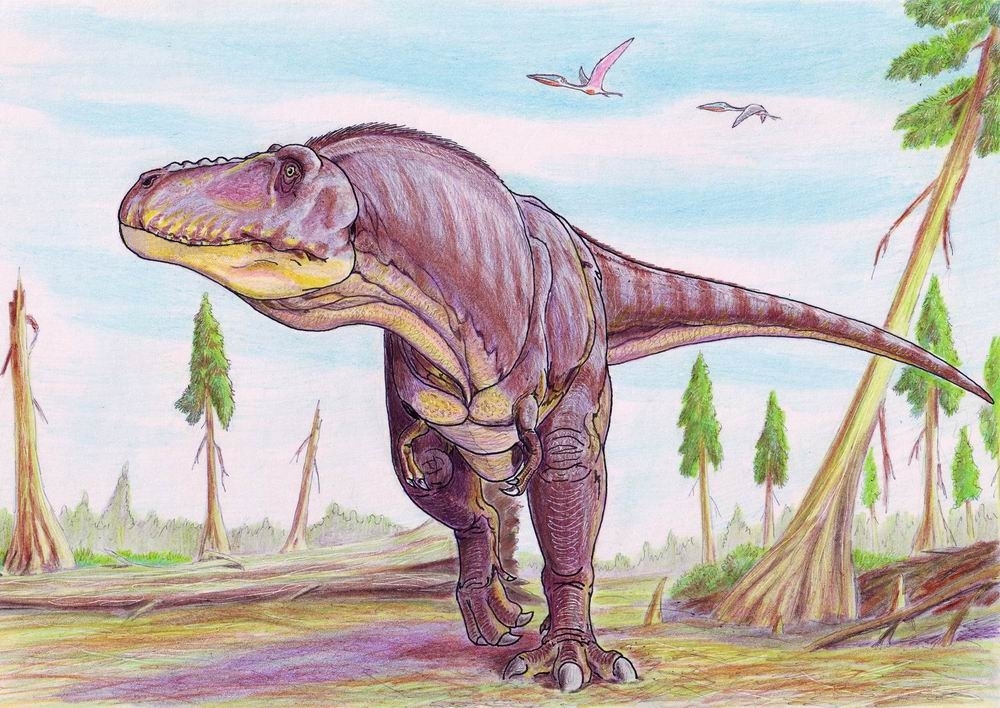
The world of Therizinosaurus was dramatically different from today’s Earth. During the Late Cretaceous period, Mongolia enjoyed a warm, humid climate with lush forests and abundant vegetation that could support such massive herbivores.
This prehistoric landscape was dominated by flowering plants, ferns, and conifers that provided the diverse vegetation needed to sustain creatures of such enormous size. The abundance of high-growing plants created the perfect environment for a specialized high-browser like Therizinosaurus to thrive.
The ecosystem was also home to various predators, including the formidable Tarbosaurus, which may have posed a threat to younger or weaker Therizinosaurus individuals. This predator-prey relationship likely drove the evolution of the creature’s impressive defensive capabilities.
Comparison with Modern Animals
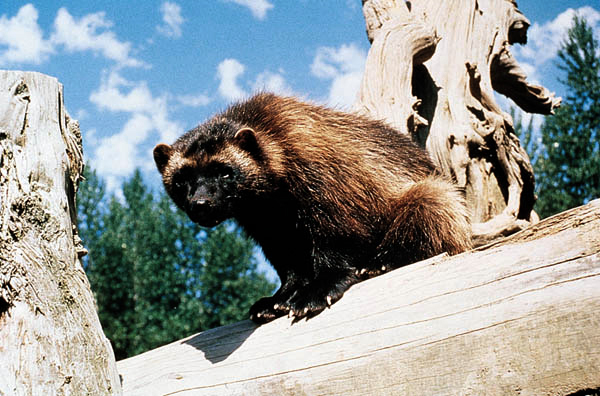
Understanding Therizinosaurus becomes easier when we compare it to modern animals that fill similar ecological roles. The creature’s feeding behavior was remarkably similar to modern ground sloths, which also use large claws to strip vegetation from trees.
The defensive strategy employed by Therizinosaurus mirrors that of modern animals like honey badgers or wolverines – creatures that aren’t aggressive by nature but possess such formidable weaponry that predators think twice before attacking. The principle of “speak softly and carry a big stick” applies perfectly to this prehistoric giant.
Perhaps the most striking modern comparison is with giraffes, which also use their height and long necks to access vegetation that other herbivores cannot reach. However, Therizinosaurus took this strategy one step further by developing powerful claws to actively harvest its food rather than relying solely on browsing.
Scientific Discoveries and Breakthroughs
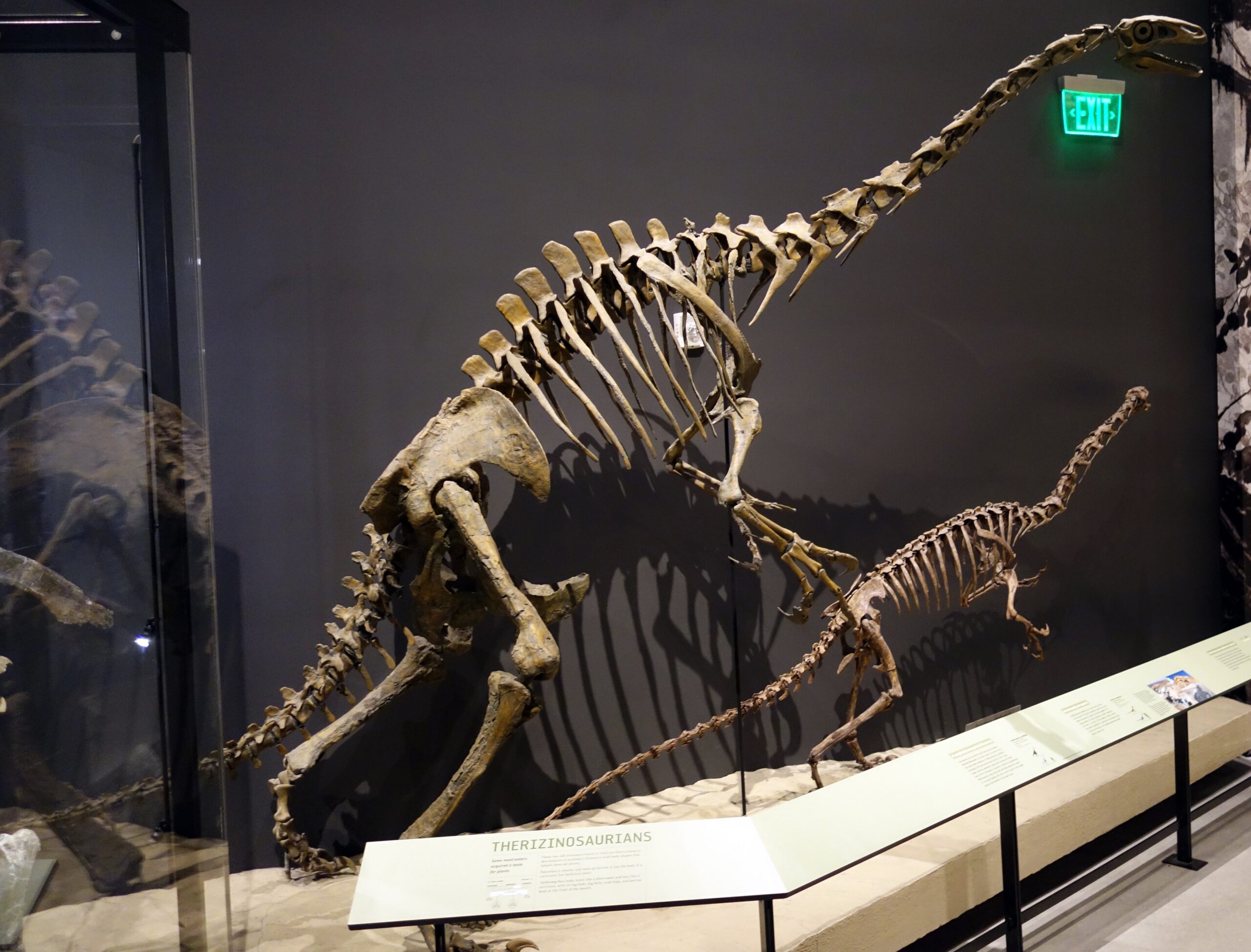
The scientific journey to understand Therizinosaurus has been filled with surprising discoveries and paradigm shifts. Early researchers were convinced they had found a massive predator, leading to decades of misinterpretation and speculation.
The breakthrough came when paleontologists discovered more complete skeletons of related species, which revealed the true nature of these mysterious creatures. Advanced imaging techniques and chemical analysis of fossilized remains provided crucial evidence about diet and behavior that transformed our understanding.
Modern scientific methods have also revealed details about the creature’s growth patterns, metabolism, and even its relationship to other dinosaur species. These discoveries continue to reshape our understanding of Late Cretaceous ecosystems and the incredible diversity of dinosaur life.
Cultural Impact and Popular Perception
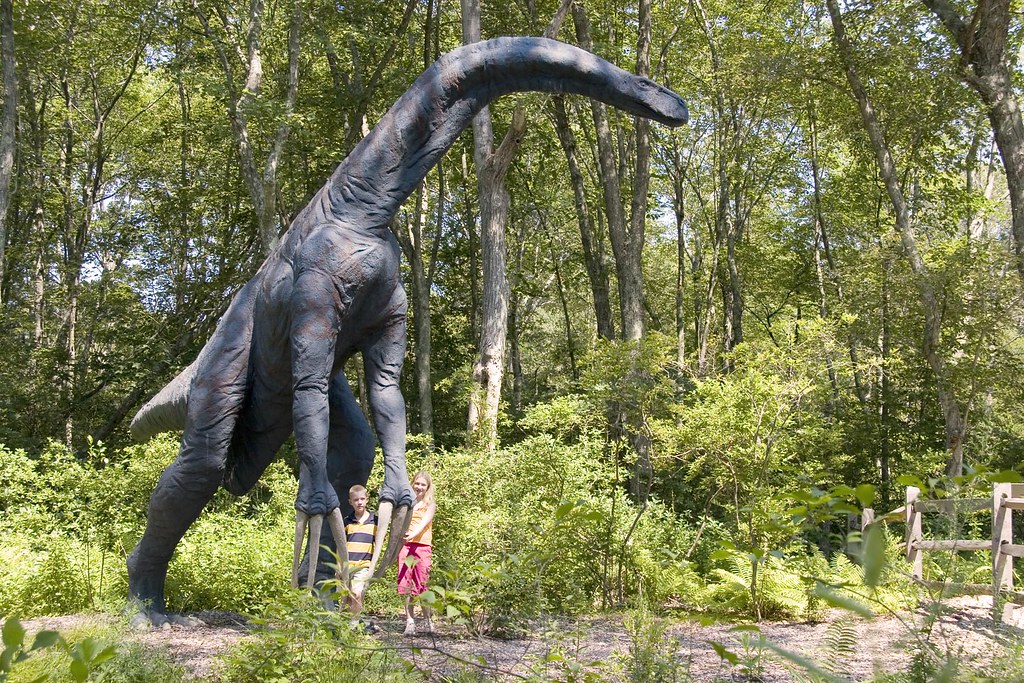
Therizinosaurus has captured the public imagination in ways that few other dinosaurs have managed. Its appearance in documentaries, books, and films has often emphasized its fearsome appearance while glossing over its peaceful nature.
The creature’s nickname as the “Freddy Krueger of the Cretaceous” has stuck in popular culture, creating a lasting impression that’s both accurate and misleading. While the comparison captures the intimidating nature of its claws, it misses the gentle reality of the creature’s actual behavior.
This disconnect between appearance and reality has made Therizinosaurus a perfect example for teaching about the dangers of making assumptions based on limited evidence. The creature serves as a reminder that in paleontology, as in life, things are rarely what they first appear to be.
Ongoing Research and Future Discoveries
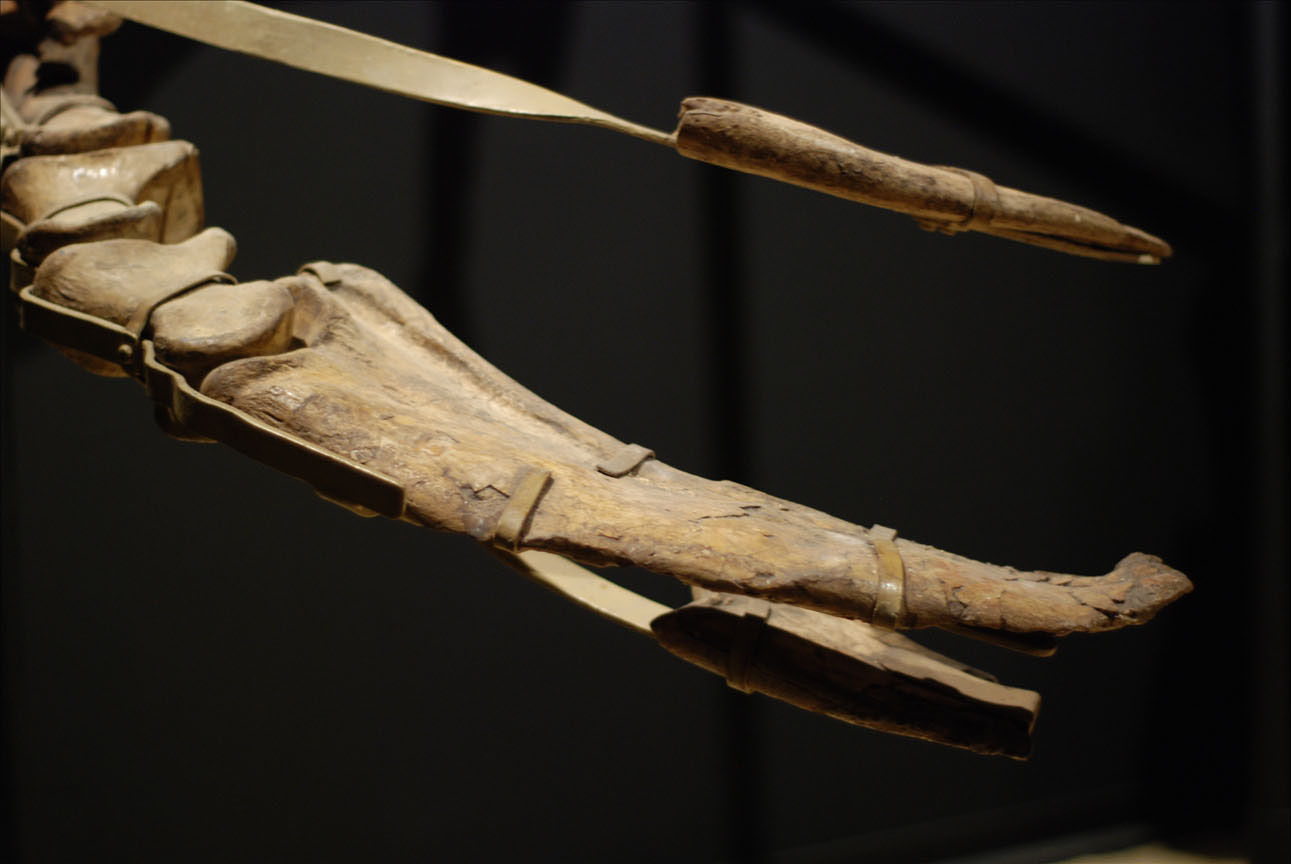
The study of Therizinosaurus continues to evolve as new discoveries and technologies provide fresh insights into this remarkable creature. Recent expeditions to the Gobi Desert have uncovered additional fossil material that’s helping to fill in gaps in our understanding.
Advanced computer modeling is now being used to analyze how these massive claws functioned and what forces they could withstand. These studies are revealing new details about the creature’s daily life and the mechanical challenges of supporting such enormous appendages.
Future discoveries may yet reveal new aspects of Therizinosaurus behavior, social structure, and ecological relationships. Each new fossil has the potential to revolutionize our understanding of this already remarkable dinosaur, proving that the mystery of Therizinosaurus is far from solved.
Conclusion
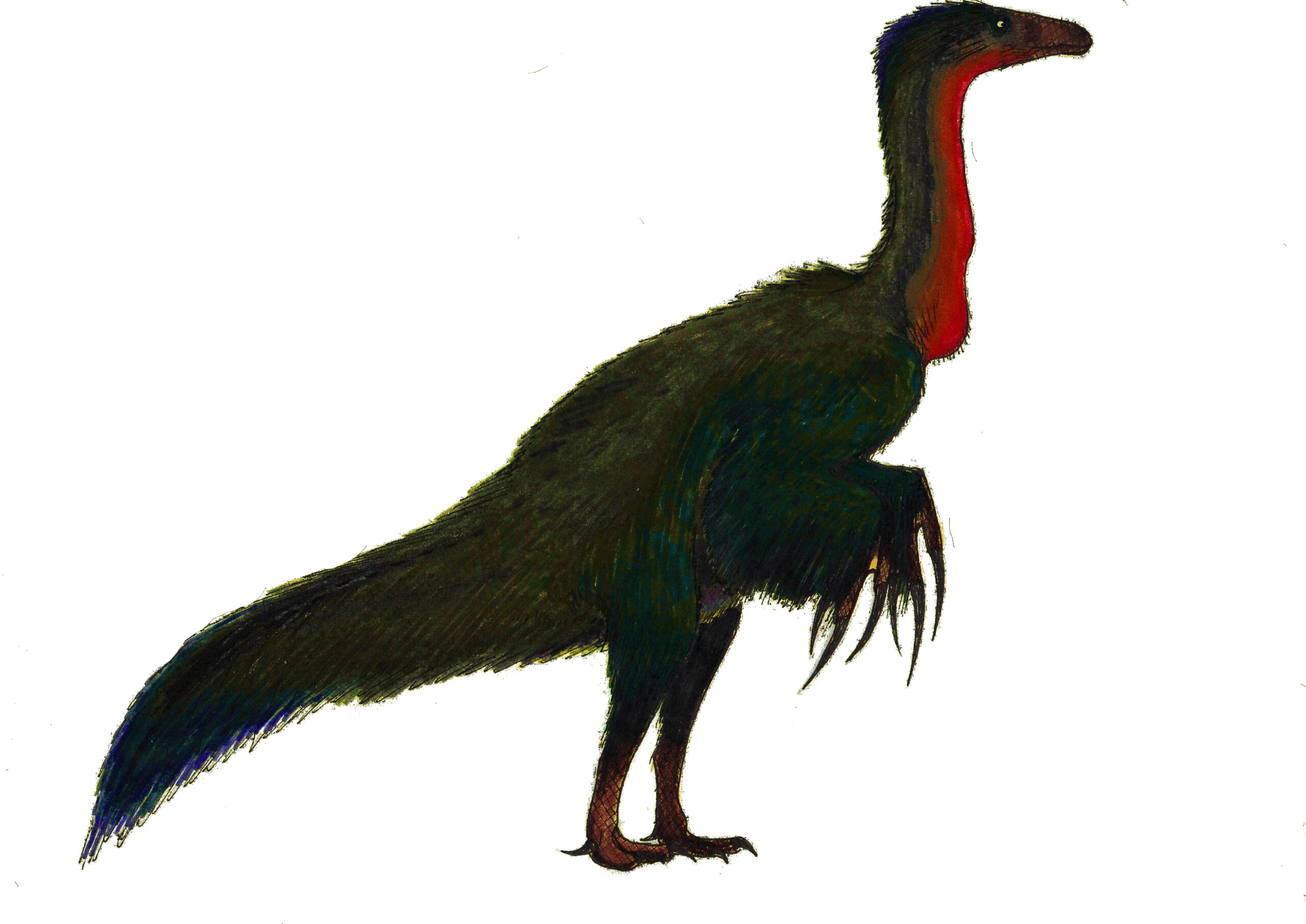
The story of Therizinosaurus serves as a perfect reminder that prehistoric life was far more complex and surprising than we might imagine. This gentle giant with its terrifying claws challenges our assumptions about how evolution works and what it means to be successful in the natural world.
The creature’s unique combination of size, weaponry, and peaceful nature created one of the most successful herbivores of the Cretaceous period. Its specialized lifestyle allowed it to thrive in an ecosystem filled with dangerous predators, proving that sometimes the best strategy is to look too tough to mess with while keeping your intentions peaceful.
Perhaps most importantly, Therizinosaurus reminds us that the fossil record still holds countless mysteries waiting to be discovered. Each new finding has the potential to completely transform our understanding of prehistoric life, keeping paleontology one of the most exciting and unpredictable fields of scientific research. What other gentle giants might be hiding in the rocks, waiting to surprise us with their unexpected stories?

